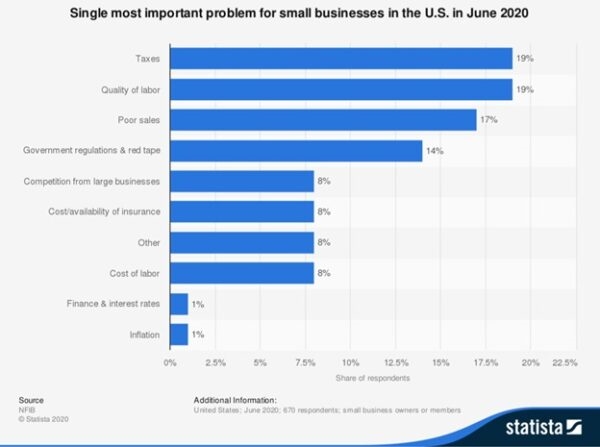If there’s one thing that the modern earner appreciates more than all else, it’s the ability of several streams of income. Aside from a main source of income, many get satisfaction from developing and utilizing their hobby as another means of income. Popularly known as side hustles, these part-time money-making efforts can turn into something quite lucrative.
With a side hustle, much of the time, there’s little need to go to school for tutorials. Creating a side income involves learning how to make money out of any and every little opportunity afforded to you. Through various platform technologies, one can increase the way they make money in the modern setting. Quite frankly, being a freelance entrepreneur is now regarded as a rewarding position.
According to the Harvard Business Review, about 44 Million U.S. workers currently operate several side operations simultaneously that include “ride-sharing companies, renting out their houses, or selling handcrafts online.” Globally, the list is endless. The mind always has the potential to find a new means of making money. The article goes on to explain the results of a case study showing those who were “emotionally and cognitively invested in the side hustle” mostly felt empowered, positive emotions, and an improvement in their full-time job performance.
The purpose of this article is to give tips and guidance on creating a side business from one’s passion. If you have ever been interested in making a little bit more than your current income, then pay attention to these steps.
How to Turn Your Side Hustle into a Viable Small Business?
Side-hustles can differ by location. Whereas some projects in certain areas can have a huge payout, in other geo-areas they may not develop as hoped, and, at best, become passion projects. The following steps can help make your ideas work, regardless of the location. Apply these key considerations when monetizing your side-hustle and make it as successful as possible:
1. Be Focused with a Plan
A side hustle must be treated just like you would treat a living creature. Nurture it, care for it, and put your best step forward. One common mistake made by many is in treating a side-hustle just as such. They don’t focus on a game plan. When one is not focused, they can miss some of the best opportunities to fall on their laps as if it was manna. Coming up with a written (business) plan and/or tangible goals can help stay focused on future development.
When developing a business plan, it’s important to understand the issues small businesses face. According to a July 2020 study released by the NFIB (National Federation of Independent Business), the largest small business association, the most pressing issues for small business owners are taxes, labor, and poor sales.

This statistic shows the most important problems for small businesses in the U.S. in June 2020. During the survey, about 17 percent of the respondents stated that the most important problem for small businesses was poor sales. This is likely a result of the global novel coronavirus (COVID-19) pandemic. (Image credit: Statista.com)
With COVID-19 still at the forefront of the concerns of many, it’s not surprising to see poor sales as one of the governing factors influencing businesses in 2020. When creating a business plan, it is wise to consider current economic conditions and have alternative marketing methods in place for bringing in clientele.
2. Give it Time & Energy
Once creating a focus, give your efforts enough time to come to fruition. Dedication is one of the most important steps to growth. There’s no need to rush making your side hustle a business; instead act with purpose. Devoting time and energy is a way of enabling it to come full-circle in its own time. A rushed job is usually a botched job. If you want your side hustle to become a reliable and stable source of income in your life, then take the time to execute your plan properly. Treat it like you would a tree; plant it, water it, feed it, and trim it when necessary. Over time watch it blossom and come to life, bearing forth fruits. Have the same mindset regarding your side-income, and it will pay out handsomely.
3. Money Management: Move Your Money in a Smart Way
Monetizing your side-hustle at is the heart of this. This is the difference between a project that brings you money and one that helps you keep occupied as a pastime activity. Focus on keeping it productive, while at the same time generating money. With the help of money tracking apps,you can calculate every single monetary expenditure from your efforts. Then introduce into your approach a savings strategy and smart banking. Apply for a separate business credit card. A business credit card can help keep expenses separate and help keep track of your cash flow.
When you are on top of your finances, you are more likely to succeed. Also, establish a relationship with a personal banker or an accredited financial advisor who will help you to keep track of your business finances and taxes. You might need to apply for a tax ID in some cases so these professionals can keep you on the right track.
Opening a business account is key for business money management. With a business credit card, you have a statement of your money spending. When tracking how you spend the money from your newly found business, it’s easier to cut out unnecessary expenses and formulate strategies to increase income.
4. Keep to a Schedule
Once you lock down your financials and have a better understanding of how you spend your money, it’s time to focus on actively scheduling. With a schedule, you can keep self-discipline. There are some activities needed to sustain a business, but others might simply a hindrance or a disturbance without realization. When you are your own boss, you need to stay focused. Focus on sticking to a schedule, optimize your time, and it will be easier to stay goal-oriented.
5. Find a Routine and Repeat It
Building up a small business usually involves trial and error. With every trial, there can be successes, shortcomings, or failures, but either way, take away lessons learned. From experience and newfound knowledge, apply what works into your routine. Once you figured out what works, integrate, and repeat what results in success. Always aim to keep learning, focus on a routine that leads to success, and stay positive! Rome wasn’t built in a day, and neither will your new business.
Set planned goals, focus your efforts, watch your spending, follow a schedule, and stick with successful routines. In the end, it’s important to remember how far you’ve come and keep your goals tuned to where you want to be.
Business & Finance Articles on Business 2 Community
(46)
Report Post






